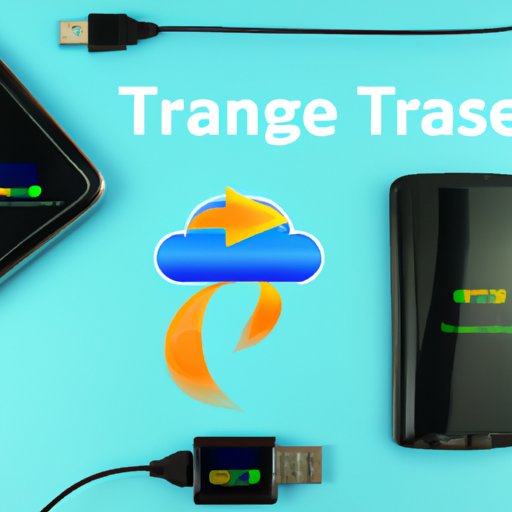
Introduction
Transferring photos from an Android phone to a computer is a common problem that many people face. With our phones becoming our primary camera and storage device, it’s important to have a reliable and efficient method to move our photos to our computer for backup and editing. There are several approaches to transfer photos, each with their own advantages and limitations. In this article, we’ll provide an overview of different approaches and guide you step-by-step on how to transfer photos from Android to computer.
Step-By-Step Guide
The most straightforward method to transfer photos from Android to a computer is through a USB cable. Follow these easy steps:
- Connect your Android phone to your computer using a USB cable.
- Select “File transfer” or “MTP” mode when prompted on your phone.
- Open “File Explorer” or “Finder” on your computer and navigate to your phone’s storage.
- Find the “DCIM” folder and select the photos you want to transfer.
- Copy and paste the photos into the desired folder on your computer.
Alternatively, you can use the Google Drive app on your phone to automatically upload your photos to the cloud and access them on your computer. To do this:
- Download and install the Google Drive app on your phone from the Google Play Store.
- Open the app and sign in to your Google account.
- Tap the “+” button and select “Upload.”
- Select the photos you want to upload.
- Once the upload is complete, go to your Google Drive on your computer and download the photos.
If you want to transfer photos wirelessly, you can use the “Windows Your Phone” app or the “AirDroid” app on your phone.
Video Tutorial
If you prefer visual learning, we’ve created a step-by-step video tutorial that guides you through transferring photos from Android to computer:
Comparing Different Transfer Methods
Wireless Transfer: The biggest advantage of wireless transfer is the convenience. It eliminates the need for a USB cable and allows you to transfer photos wherever you are. However, wireless transfer can be slower and less reliable than USB transfer. It also requires both devices to be connected to the same Wi-Fi network.
USB Transfer: USB transfer is the most reliable and straightforward method. It provides fast transfer speeds and ensures that your photos are securely transferred to your computer. However, it requires a USB cable and a compatible computer USB port.
Cloud Transfer: Cloud transfer provides the benefit of automatic photo backup and sync across multiple devices. It eliminates the need for manual transfer and provides easy access to photos on any device. However, it requires an active internet connection and access to a cloud storage service like Google Photos or Dropbox.
Highlighting Common Issues and Solutions
When transferring photos from an Android phone to a computer, you may face some common issues such as:
- Device not detected: If your computer is not detecting your Android phone, make sure that your phone is set to “File transfer” mode and that the USB cable is properly connected.
- Slow transfer speed: If you are transferring a large number of photos, the transfer speed may be slow. Try to transfer smaller batches of photos at a time.
- Photo corruption: If your transferred photos are corrupted or cannot be opened, check if the photos are supported by your computer’s photo viewer. Sometimes, outdated software may not be able to read newer photo formats.
Discussing Alternative Options for Photo Transfer
If you’re not comfortable connecting your phone to your computer or prefer not to rely on cloud storage services, there are alternative options for transferring photos:
- Email: You can send your photos as attachments via email. However, this method may not be suitable for transferring large batches of photos.
- Bluetooth: You can use Bluetooth to transfer photos wirelessly. However, this method can be very slow and is not recommended for transferring large batches of photos.
Conclusion
Transferring photos from Android to computer is essential for data backup and editing. There are several approaches to transfer photos, each with their own pros and cons. Whether you choose USB, wireless or cloud transfer, it’s important to choose the approach that best suits your needs and preferences. We hope that this guide has provided you with the information you need to successfully transfer your photos.




